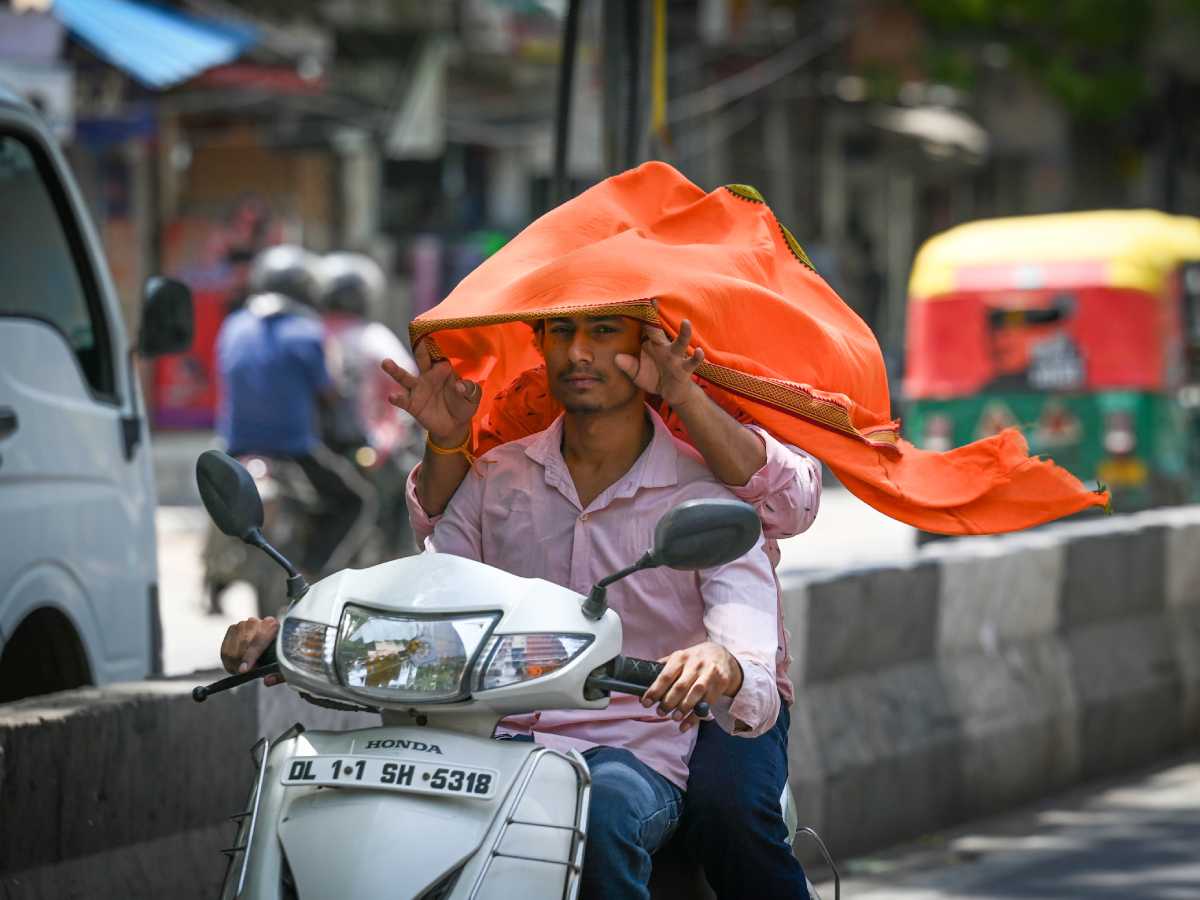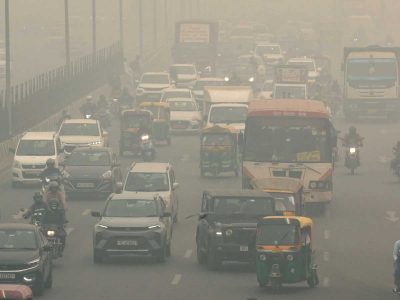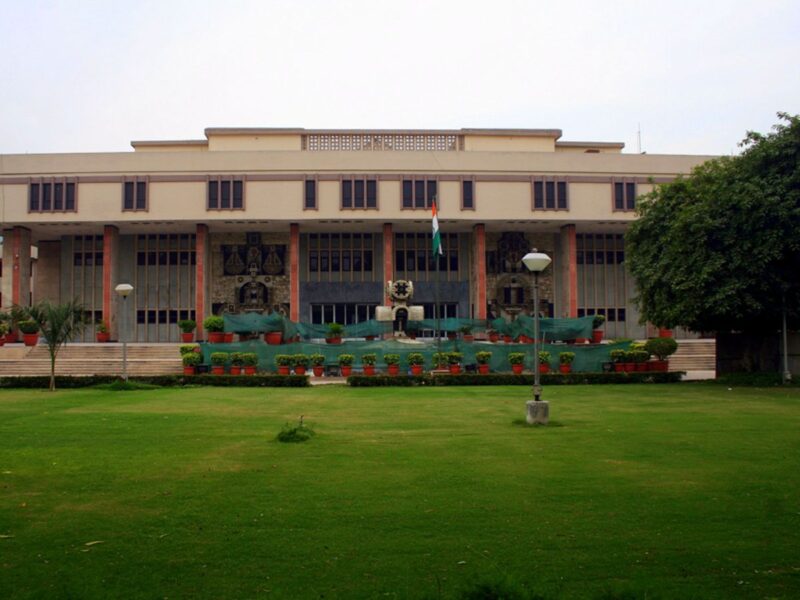Delhi: A total of 367 people lost their lives over the last few weeks due to intense heatwave in the national capital. However, the actual figure of the deaths is likely to be much higher than this as several hospitals stopped sharing data after a period of time.
| Central Government Hospitals | Deaths |
| Safdarjung Hospital | 32 |
| RML Hospital | 20 |
| Lady Hardinge | 2 |
People who have succumbed to death primarily belong to the underprivileged socioeconomic background.
According to data shared by the officials, Centre-run Vardhman Mahavir Medical College and Safdarjung Hospital (VMMC & SJH) reported the most deaths due to heat-related illnesses in the Capital, amounting to 32 till June 25.
| Delhi Government Hospitals | Deaths |
| Lok Nayak Hospital | 17 |
| Deen Dayal Upadhyay Hospital | 16 |
| Dr BS Ambedkar Hospital | 15 |
| Sanjay Gandhi Memorial Hospital | 6 |
| Guru Teg Bahadur | 6 |
| Others | 11 |
“However, since March – the start of summer season, Safdarjung Hospital has received a total of 91 patients suffering from heat-related illnesses. On June 23, 13 patients were admitted to its Heat Related Illnesses (HRI) unit, out of which nine were critical and on ventilator support,” the data stated.
Informing about preparations to tackle the heatwave patients, a senior official said, “As part of the pre-heatwave stage preparations, comprehensive sensitisation programmes have been conducted for all healthcare providers. This includes training doctors and nursing staff in triaging and the acute management of suspected heat-related illnesses (HRI) patients.”
| What is heatstroke? |
| Heatstroke and other heat-related illnesses occur when the body’s temperature regulation fails due to prolonged exposure to high temperatures or physical exertion in hot environments. Heatstroke is the most severe form of heat-related illness, characterized by a core body temperature of 104 degrees Fahrenheit (40 degrees Celsius) or higher. It can lead to organ damage or failure and is considered a medical emergency. |
He said further, “Beds have been assigned and fully equipped for the active management of suspected HRI cases. These beds come with necessary facilities such as ventilators, monitors, and additional pedestal fans to ensure comfort for the patients.”
Cooling devices are also available while efforts have been made to create awareness.
Another Centre-run facility, Ram Manohar Lohia Hospital (RML) reported a total of 20 deaths till June 21, following which the officials refused to provide the data.
| Other Authorities | Deaths |
| Delhi Police | 50 |
| Centre for Holistic Development | 192 |
“On June 20, a total number of seven patients lost their lives at the RML hospital due to the extreme heatwave condition, highest ever in a time span of 24 hours, while 26 patients were admitted to the hospital due to heat-related illnesses,” said a senior doctor, who did not wish to be named.
| Delhi’s Temperature | Degrees Celsius |
| All time highest maximum temperature reported on June 10, 2024 | 48 degrees Celsius |
| Highest minimum temperature reported on June 18, 2024 in 60 years | 35.2 degrees Celsius |
Giving details of patients succumbing to heat, he said, “A 26-year-old individual was the youngest patient to be received by the facility and a 77-year-old man was the oldest patient. Most of the patients admitted fall under the age group of 30 to 50 years.
“The deceased include a construction worker (50), salesman (35), cart-puller (58), and a guard (55),” said a senior official.
“Currently, there are a total of 32 patients admitted to the hospital due to heat-related illnesses, out of which 26 are on ventilator support and the other six are stable,” he said.
“On the other hand, 19 patients were brought dead at the facility in the past 24 hours. It is not confirmed if they lost their life due to heat-related illnesses,” he added.
RML Hospital is the only facility that has a dedicated heatstroke unit in the national capital. It was inaugurated in May 2024.
On the other hand, Lady Hardinge Hospital reported a total of two deaths due to heat-related illnesses till June 20, sources said.
The Delhi government-run Lok Nayak Hospital (LNJP) reported that a total of 17 patients have succumbed to heat-related illnesses at the facility so far.
Also read: Monuments at Sanjay Van to be restored
“No death was reported on June 21. However, on June 20, a total of three patients died at the hospital due to the intense heatwave, while a total of five patients lost their lives on June 19 and two patients succumbed at the facility on June 18 due to the same reason,” a senior official informed Patriot.
“A total of 17 patients suffering from heat-related illnesses were admitted to the hospital on June 19, while 16 patients were received on June 18,” he said.
“Additionally, in the time span of June 18-23, 16 patients died at Deen Dayal Upadhyay Hospital, 15 at BS Ambedkar hospital, six at Sanjay Gandhi Memorial, six at Guru Teg Bahadur and 11 at other Delhi government-run hospitals in the Capital,” say sources.
Police recovers 50 bodies in Capital
Delhi Police have recovered 50 bodies belonging to people from underprivileged socioeconomic backgrounds in the national capital.
A senior police officer reported that the body of a 55-year-old man was found at the children’s park near India Gate on Wednesday. The officer added that post-mortem will be conducted to ascertain the cause of death.
Speaking to Patriot, Deputy Commissioner of Police (DCP) East District, Apoorva Gupta said, “At least 200 homeless people were shifted to the rain basera or night shelters which were set up in Delhi by the state government.”
She informed that specific instructions have been issued to the patrolling staff and Emergency Response Vehicles (ERVs) regarding the extreme heatwave conditions.
“Instructions include shifting the homeless people found in an abandoned or vulnerable state around ISBT, Anand Vihar, to shelter homes or facilities provided by the social welfare department. Patrol staff on motorcycles or ERVs have been briefed to take such individuals to rain basera or a shelter if found in vulnerable conditions,” said the DCP.
“Apart from this, every establishment in the East District has set up water points for homeless individuals to collect water. Additionally, Resident Welfare Associations (RWAs), Market Welfare Associations (MWAs), and institutions like schools have been encouraged, sensitised to make water points available for homeless individuals,” DCP added.
The Centre for Holistic Development, an NGO dedicated to aiding the homeless, reported that 192 homeless individuals in Delhi died due to the heat wave from June 11 to 19.
Also read: Delhi: Fishermen grapple with lack of catch as Yamuna boils up
Doctors across hospitals noted that most of those who died during treatment or were brought in already dead were men around the age of 40. Additionally, hospitals reported that at least 132 individuals were brought in dead between June 18 and June 21.
“Those who were brought to the hospital dead were generally men over 40 years old, many of whom were elderly with underlying health conditions,” stated a doctor from Safdarjung Hospital.
Delhi’s mercury shatters all records
The maximum temperature in the national capital soared to 48 degrees Celsius on June 10, shattering all previous records, according to the Indian Meteorological Department (IMD).
“The Palam Observatory in Delhi recorded the maximum temperature of 48 degrees Celsius, an all-time high. The factors contributing to this record temperature are dry westerly winds, the absence of a western disturbance in the plains, and intense heat in the month of June,” said Kuldeep Srivastava, the regional weather forecasting chief of IMD.
Meanwhile, on June 18, Delhi registered its highest minimum temperature in 60 years at 35.2 degrees Celsius. It was just 0.3 degrees Celsius lower than the record set on June 10, 1964, when the minimum temperature reached 35.5 degrees Celsius.
The previous highest temperature since 2000 was recorded on June 3, 2000, at 34.7 degrees Celsius, which is lower than what was recorded on Wednesday. Additionally, on June 17, the minimum temperature at night was 33.8 degrees Celsius, which was the highest in the past six years.
What is heatstroke and heat-related illness
Dr Seema Balkrishna Wasnik, Head of Emergency Medicine and in charge of the heatstroke unit, RML hospital, said, “Heatstroke and other heat-related illnesses occur when the body’s temperature regulation fails due to prolonged exposure to high temperatures or physical exertion in hot environments. Heatstroke is the most severe form of heat-related illness, characterised by a core body temperature of 104 degrees Fahrenheit (40 degrees Celsius) or higher. It can lead to organ damage or failure and is considered a medical emergency.
“Heat exhaustion is another heat-related condition, marked by heavy sweating, weakness, fainting, and cold, clammy skin. If not treated promptly, heat exhaustion can progress to heatstroke,” she said.
“Other heat-related illnesses include heat cramps, which involve painful muscle spasms, and heat rash, a skin irritation caused by excessive sweating,” Dr Seema added.
Spike in cremation at Nigambodh Ghat
A day after the national capital reported the all-time high temperature, Suman Gupta, General Secretary of Nigambodh Ghat, said, “On June 19, 142 corpses were brought to the Nigambodh Ghat for cremation. This number represents a significant increase of nearly 136% compared to the daily average of 50-60 bodies cremated here.
“The number of bodies brought to the city’s oldest and largest crematorium for cremation was higher on June 18, with 97 bodies. Normally, the crematorium handles around 50-60 bodies daily, but there has been a noticeable increase in recent days. As of the morning, 35 cremations had already taken place,” Gupta added.





